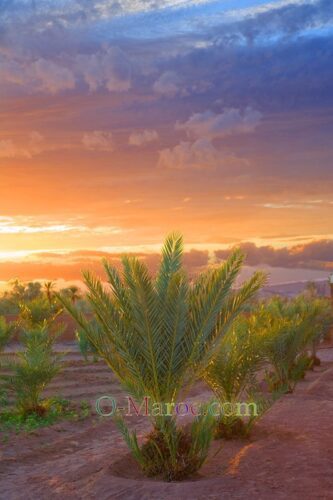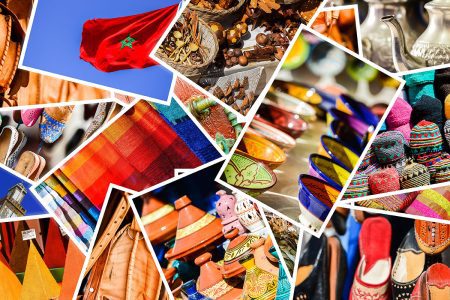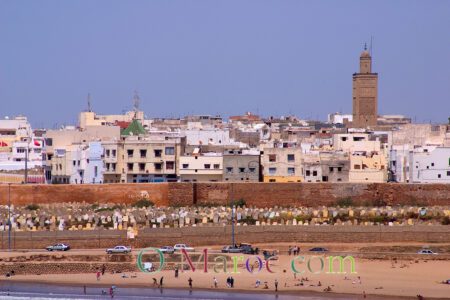An improved logo

Our logo has changed a little: we’ve added the name of our Oasis in Berber. It’s a faithful transcription of our French name.
By the way, did you know that “Mezgarne” or “Mizgarne” in Berber refers to herds of cattle? A memory from the days before the drought, when our oasis was lost in the middle of alfalfa fields and tall palm trees. Many nomads also came to graze their livestock, hence the name, made up of “Ezgarne”, the herd and “M(i)” the mother, which feeds…
A blog for the Oasis
The big new feature of the site is our blog. We needed a simple tool for quick updates, one-off information with a limited lifespan (such as the date of a moussem). And it also allows us to receive your impressions, to show you aspects of Morocco that don’t quite fit into the structure of our site…
For example, we will also be putting the music of young Moroccan musicians online. The first group, “Gawa Diffusion”, is from Casa, and plays what is known in the jargon as “Moroccan Fusion”, world music based on the rhythms of the Gnawas. More to come, too, and news of our travels. We hope this blog will become a meeting place for lovers of Morocco.
A new hotel: Les Roches in the Todra gorges
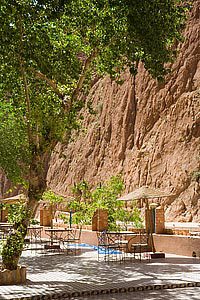
A new hotel in our pages: the Hotel Restaurant des Roches, in the Todra gorges. At the foot of the wadi, where the nomads’ goats come to drink in the morning, the hotel offers comfortable rooms in a traditional setting, with a variety of decorations, several dining rooms, a Moroccan lounge and a refreshment bar.
It’s an ideal place to stop off during a visit to the deep south, and in summer to enjoy the coolness, protected from the sun by the cliffs and trees that grow in front of the hotel.
There are also many excursions in the area, on horseback or mountain bike, and the hotel hires out climbing equipment that you can use, accompanied by the guides (who speak French and Spanish).
M’hamid of the Gazelles
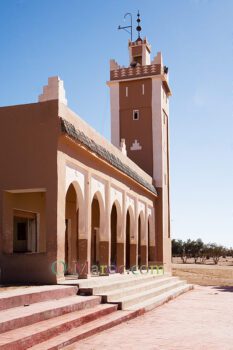
If there were a sea, it would be the shore of the Syrtes. There’s nothing beyond M’Hamid but sand and desert, and far away, somewhere, a Polisario who made a one-night incursion here in 1992. But since then, the police have been keeping an eye on the four-wheel drive vehicles, and keeping scrupulous records of who enters and leaves this border zone.
M’Hamid of the Gazelles (that’s the meaning of the name) is indeed a border post facing the volcanic Guir Hamada and the immensity of the Sahara, at the end of the road. Literally. The tarmac suddenly disappears in the central square, where a small mosque gives way to a few tourist shops offering hikes, excursions and Berber souvenirs. This is the last of the oases, the place where the Drâa wadi finally sinks into the sand to reach the Atlantic coast after more than 800 km of underground travel.
Leaving aside the arrival point, where you pass a few luxury hotels buried under the palm grove, M’Hamid gives you a good idea of what Zagora or Ouarzazate probably looked like in the 1930s: a few mud houses lined up as best you can along two or three streets (just enough to qualify as a town). Children looking at you curiously.
The Berber Wedding
I had taken the bus,” says Anne, “at siesta time, so at the height of the heat; in Zagora the month of May is already being affected by the first stirrings of a scorching wind. I was on my way to M’hamid, a military post in the far south, on the edge of a sandy plain where the Drâa wadi flows. […]
Around five o’clock there was a heavy sandstorm. The coach had turned and turned a hundred times, threading its way across the expanse where landmarks were gradually disappearing. Now the sky was the colour of the track, and within it travelled waterspouts of crazy grains, a blinding hailstorm. The palm trees ground the air, braided and divided by the currents.
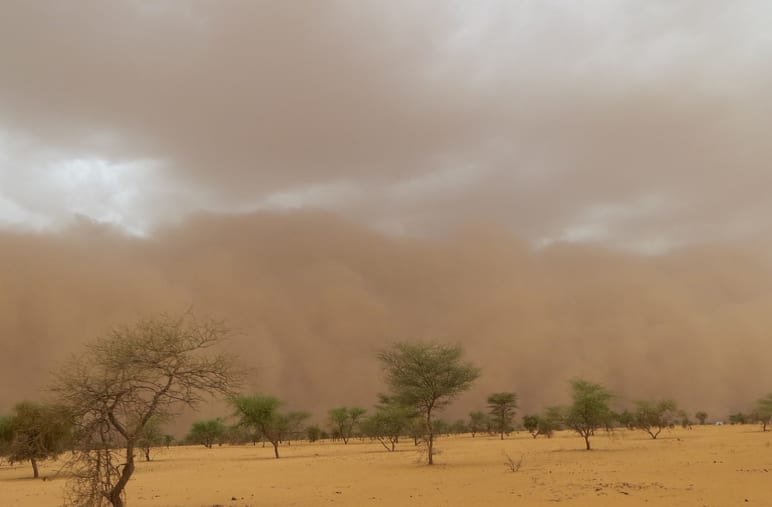
The Old Morocco website
While surfing the net, we came across a very interesting site full of old photos and postcards of Morocco.
You can dream away at the views of the gates of Marrakesh and Fez in the last century, the palm grove in the middle of the countryside, or more recent images, where you can see colonial architecture from the thirties, still brand new, and where you can have fun trying to find the present-day arteries of our major cities, with their new names.
A big thank you to the creator, Denise, for giving us permission to use these images, and also for her kind words about us!
And finally, a big thank you…
We had almost 12,000 visitors to our site in August alone. For a small business like ours, which can’t afford to advertise intensively, that’s huge. This is partly due to you, who talk about us and pass on our address.
So, as they say over there, choukran bezaf, we’ll try to keep you interested!
 A typo or syntax error? You can select the text and hit Ctrl+Enter to send us a message. Thank you! If this post interested you, maybe you can also leave a comment. We'd love to exchange with you !
A typo or syntax error? You can select the text and hit Ctrl+Enter to send us a message. Thank you! If this post interested you, maybe you can also leave a comment. We'd love to exchange with you !

